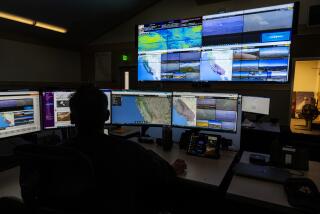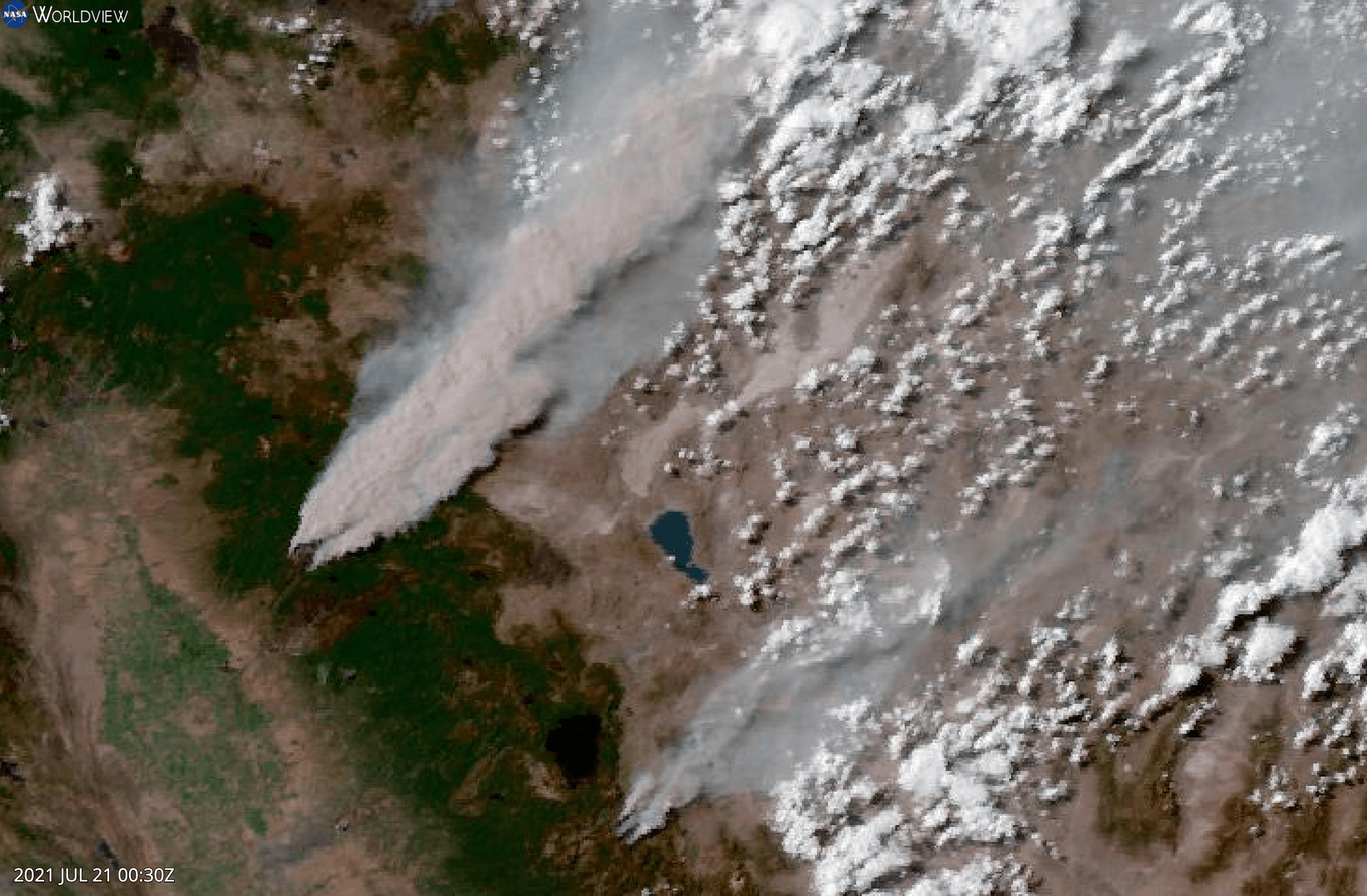U.S. spies on Iraqi army, officials say
WASHINGTON — Caught off guard by recent Iraqi military operations, the United States is using spy satellites that ordinarily are trained on adversaries to monitor the movements of the American-backed Iraqi army, current and former U.S. officials say.
The stepped-up surveillance reflects breakdowns in trust and coordination between the two forces. Officials said it was part of an expanded intelligence effort launched after American commanders were surprised by the timing of the Iraqi army’s violent push into Basra three months ago.
The use of the satellites puts the United States in the unusual position of employing some of its most sophisticated espionage technology to track an allied army that American forces helped create, continue to advise, and often fight alongside.
The satellites are “imaging military installations that the Iraqi army occupies,” said a former U.S. military official, who said slides from the images had been used in recent closed briefings at U.S. facilities in the Middle East. “They’re imaging training areas that the Iraqi army utilizes. They’re imaging roads that Iraqi armored vehicles and large convoys transit.”
Military officials and experts said the move showed concern by U.S. commanders about whether their Iraqi counterparts would follow U.S. guidance or keep their coalition partners fully informed.
“It suggests that we don’t have complete confidence in their chain of command, or in their willingness to tell us what they’re going to do because they may fear that we may try to get them not to do it,” said John Pike, director of GlobalSecurity.org, a website about intelligence and military issues.
But the development was also seen as a sign the Iraqi army has reached a level of independence and competence that U.S. military planners had hoped it would achieve.
“The bad news is we’re spying on Iraqis,” said the former military official. “The good news is that we have to.”
The former military official and several other sources described the operation on condition of anonymity because of its sensitivity. The Pentagon and U.S. intelligence agencies declined to comment.
However, the expanded satellite surveillance comes as the Iraqi military has embarked on a series of large-scale operations to reassert government control in areas, including Baghdad’s Sadr City and the northern city of Mosul, that have been havens for hostile militias and insurgents.
The first of the operations, launched in March, was an assault in the southern city of Basra on elements of the Mahdi Army, a militia led by anti-American cleric Muqtada Sadr. Among the forces Iraqi Prime Minister Nouri Maliki deployed were units that had just completed training and did not have a U.S. team assigned to them, which may help explain why American commanders were caught off guard.
Despite its tactical shortcomings, the operation has been portrayed as a major success, a demonstration that the Iraqi army, once viewed as ineffectual, if not incompetent, was emerging as a capable force.
Adm. Michael G. Mullen, chairman of the Joint Chiefs of Staff, said last month: “They moved a division inside a few days. And a year ago the Iraqi security forces could never have moved those kinds of forces.”
Iraq’s parched terrain has been a focal point of U.S. spy satellites for nearly two decades. Satellites were used to capture images of suspected chemical and biological weapons sites before the war, although the suspicions were proved unfounded, and continue to be used to track insurgent movements and the suspected influx of arms from Iran.
The satellites are part of a vast intelligence arsenal the U.S. has deployed in Iraq, including the CIA’s largest overseas station, eavesdropping equipment that monitors much of the communications traffic, as well as Predator drones and other aircraft.
But in recent months, U.S. intelligence agencies have aimed the spacecraft’s high-resolution lenses at Iraqi military positions and instructed imagery analysts to monitor those units for signs that they are preparing to deploy, officials said.
“What the satellites can do that Predators can’t is they can see the country,” the former official said. “They can detect big movements every day: That the Iraqi 4th infantry division is here. That Iraqi special forces moved from here. That there is a set of 12 vehicles congregated south of Samarra.”
U.S. intelligence officials stressed that the satellites are not being diverted from other high-priority assignments -- including tracking terrorist and insurgent activity -- but are capturing additional images as part of routine sweeps.
Officials also emphasized that the surveillance did not reflect an adversarial relationship. The two militaries continue to coordinate closely and conduct joint operations, officials said, with U.S. military training teams traveling with Iraqi army units. The satellites provide U.S. officials with an independent means of tracking those movements.
But their use also reflects a gradual shift as the Iraqi government becomes more independent of its U.S. sponsor, and the two countries’ interests diverge. Iraq has recently taken steps, including providing a red-carpet reception in March for Iranian President Mahmoud Ahmadinejad, that demonstrate it doesn’t intend to remain a U.S. client.
Even though the United States in effect installed the government of Iraq and helped build its institutions, U.S. spy agencies have been active in the country from the beginning, keeping close tabs on Iraqi politicians and influential groups.
Officials said the satellite surveillance was aimed to a large degree at making sure U.S. commanders know where the Iraqi army is operating so the two forces don’t collide.
“You have an independent army for an independent nation conducting independent operations,” a senior U.S. intelligence official said. “To know where that army is so you don’t have an unintended consequence would seem like a benefit.”
American spy satellites are operated by the National Reconnaissance Office, a U.S. intelligence agency based in Chantilly, Va., that is so secretive that its existence was not declassified until 1992. Rick Oborn, a spokesman for the NRO, declined to comment.
“As a matter of policy, we do not discuss our taskings,” Oborn said.
Officials declined to say where the request to use satellites to monitor the Iraqi army had originated. Ordinarily, requests from commanders in Iraq are routed through the Pentagon’s Defense Intelligence Operations Coordination Center before being sent to specific agencies such as the NRO.
Because the satellites are already in routine orbits over Iraq, getting images of Iraqi military positions probably does not require the spacecraft to be rerouted, only to be given new coordinates to photograph.
For decades, U.S. satellites were one of the nation’s primary ways of tracking the military activities of the former Soviet Union. But U.S. intelligence officials said the United States also has a long history of monitoring the militaries of even close allies.
“I can count on one hand those countries -- and they are our closest allies -- where collection is not employed against them,” said a former high-ranking U.S. intelligence official who had a major role in setting collection priorities.
Experts said the Iraq surveillance probably involved what are known as Keyhole satellites, spacecraft the size of a school bus that orbit about 170 miles above the Earth’s surface and are equipped with optical and infrared lenses that can capture high-resolution images day or night.
The NRO is believed to operate at least six of these satellites, which travel over Iraq frequently enough to provide updated photos at least four times a day, said Jeffrey T. Richelson, an expert on satellites and senior fellow at the National Security Archive, a research institute at George Washington University.
Pictures from the latest versions of the Keyhole cover about three square miles of surface area, Richelson said, producing images detailed enough to allow analysts to spot a license plate, but probably not read its numbers.
--
Times staff writer Julian E. Barnes in Washington contributed to this report.
More to Read
Sign up for Essential California
The most important California stories and recommendations in your inbox every morning.
You may occasionally receive promotional content from the Los Angeles Times.










